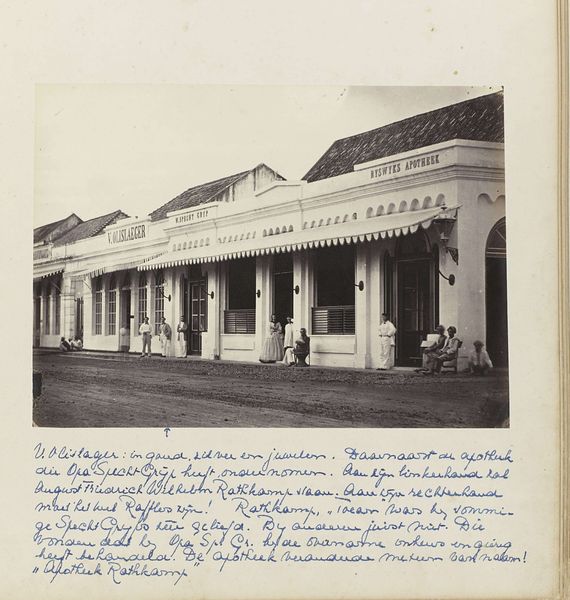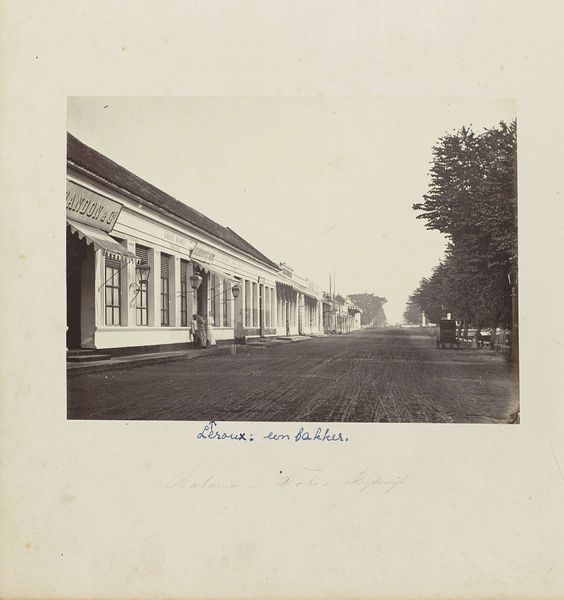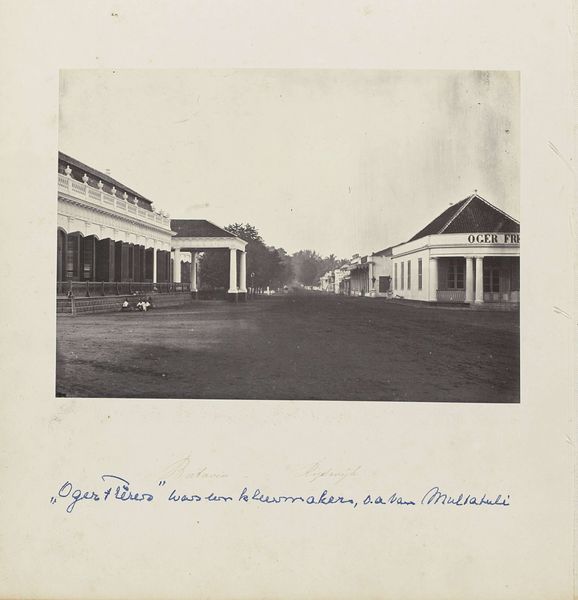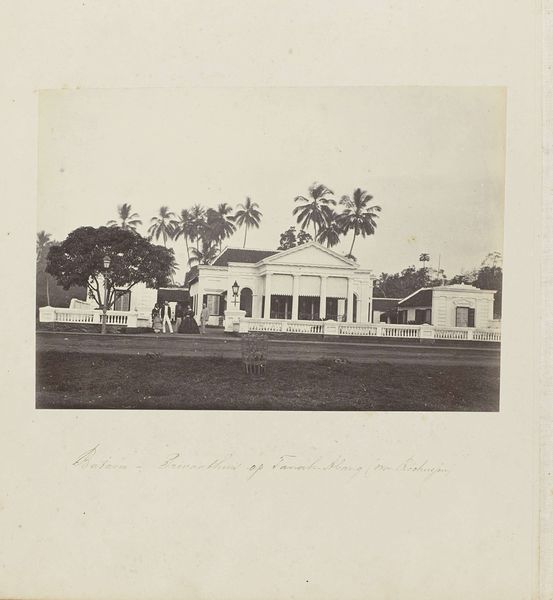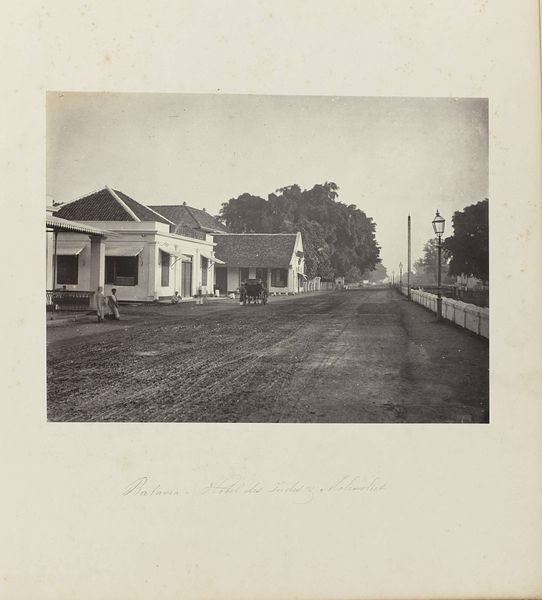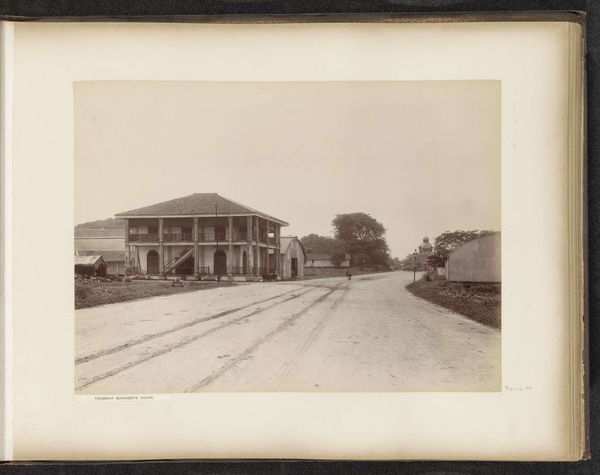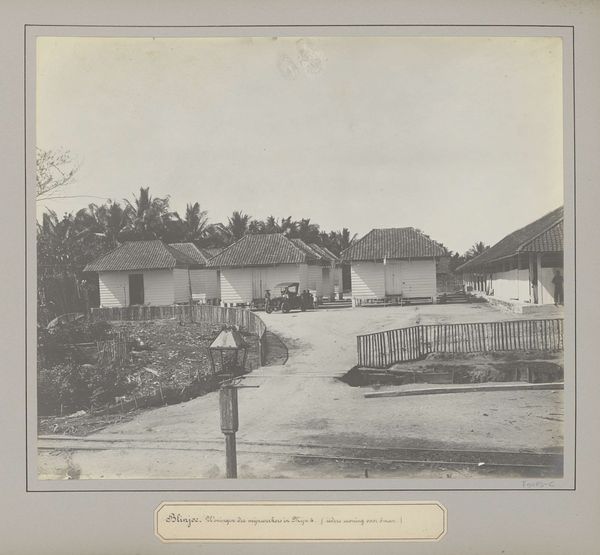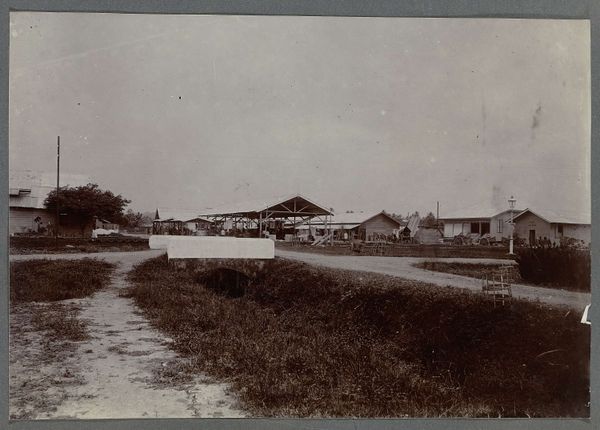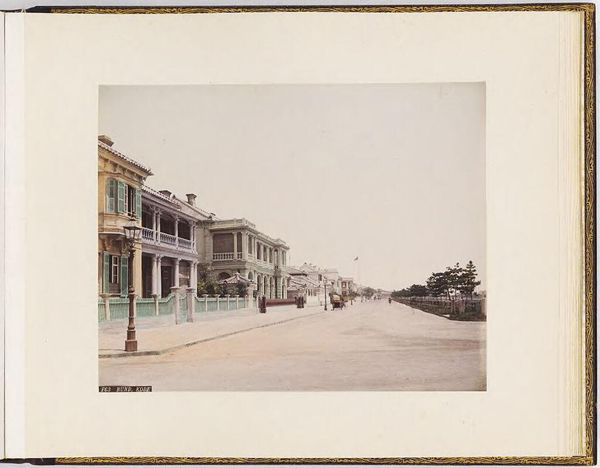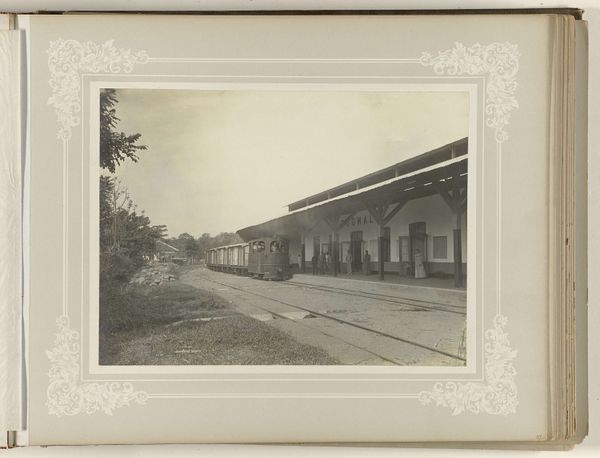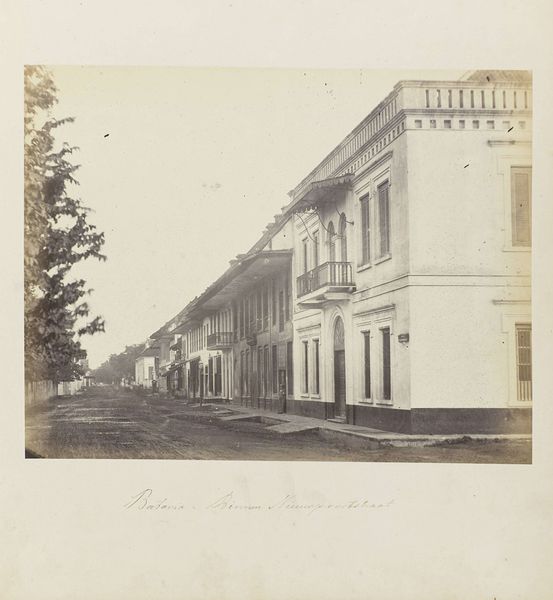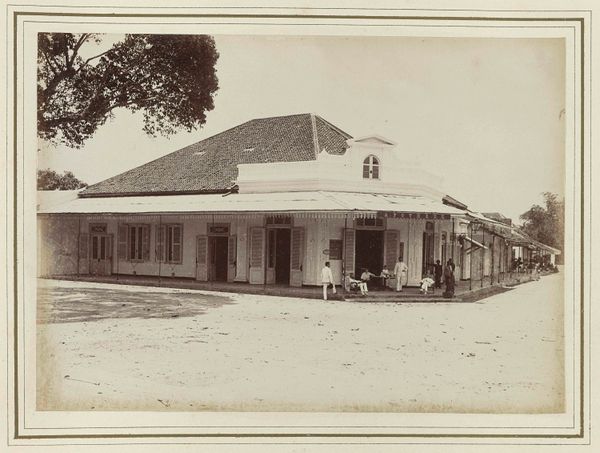
daguerreotype, photography
#
landscape
#
daguerreotype
#
street-photography
#
photography
Dimensions: height 184 mm, width 240 mm
Copyright: Rijks Museum: Open Domain
Curator: Good morning, welcome. Today, we are looking at "Stads Herberg & kleine Boom" taken between 1863 and 1866. It is an albumen print. The photographers are Woodbury & Page, and it is currently held in the collection of the Rijksmuseum. Editor: There is a stark stillness to this street, despite being what looks to be a public space. The architecture hints at order, a very precise way of life. It also looks almost theatrical with the portico like something on a film set. Curator: I’m struck by the daguerreotype process here. Imagine the labour involved, from preparing the plates to the exposure time. And then the transport and distribution of these delicate images. What does that tell us about its accessibility in society? Editor: This thoroughfare serves as a central axis, leading the eye into the distance. The pillars evoke classical antiquity, speaking to an order imposed by colonial structures. A powerful cultural statement through the image. Curator: Exactly! Colonialism relies on both material extraction and visual dominance. Photography was instrumental in crafting and disseminating an idealized image of control. Every print becomes an instrument of social order and reinforces hierarchies. The act of production itself becomes politically charged. Editor: I find it haunting. The play of light and shadow creates a dreamlike quality that lingers, forcing me to confront a cultural memory of unequal encounter. It carries with it the silent weight of that time. Curator: It prompts us to question the romantic view of progress that photography was meant to portray. We have to delve into the materials used, their origins, the colonial enterprise. By examining it from production to reception, a daguerreotype challenges this very notion. Editor: Thank you. This has broadened my perspective, revealing the interplay of visibility and the unseen, echoing how certain narratives are prioritized over others. Curator: And hopefully, it has allowed us to rethink the consumption of these visual objects in the 21st century. Thank you.
Comments
No comments
Be the first to comment and join the conversation on the ultimate creative platform.
